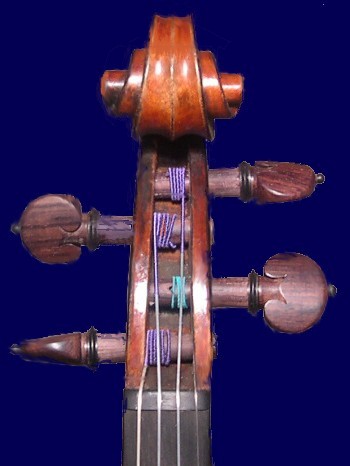Buyer’s Guide
Buying a violin is an exciting experience. Whether it is your first violin or an upgrade to a better quality instrument, there are some fundamental guidelines to respect. Here is a quick guide to the most important aspects to take in to account when purchasing a violin.
I would like to add that all the instruments from violiniamati abide by these guidelines.
1) Condition
It is very important that the violin is in good condition. Old violins that have had many years of playing can be damaged during their history. Some small damage can be easily repaired and does not in any way affect the value of the instrument. Sometimes a violin can have a repaired crack. If it is well repaired and not in a “critical” position like near the soundpost then this will have no effect on the sound of the violin. It may reflect on the price. Sometimes good old and interesting violins do have some cracks but it is still worth restoring them because of their acoustical and historical value.
Any repairs on the instruments for sale will be clearly specified.
2) Measurements
Unfortunately overlooked by some dealers, the measurements of a violin are extremely important and all the violins for sale here are within the range of correct measurements.
These are:
Length of the acoustical body - this must be between 352 and 360mm.
The diapason - This measurement is defined by the little “cuts” in the f holes of the violin and this is the position where the bridge is placed. The measurement is taken from the top of the front of the violin to where the inner “cut” of the f hole is. This measurement is between 191mm and 197mm. In some cases it is normal to move the bridge up or down slightly to compensate for this measurement.
The neck - this measurement is defined between the ebony top nut where the strings pass over to the edge of the top of the violin (where the neck is inserted in to the body). This measurement is 130mm.
Where these three fundamental measurements are in order, the violin automatically is easier to play and as one’s own tecnique improves it becomes clearer why they are important.
3) Bass bar
Sometimes, during the life of a violin, it becomes necessary to change the bass bar. In many cases, I have made a new bass bar for the violins for sale. This involves taking off the top of the violin, taking out the old bass bar and placing a new bar in the violin. This is regarded as a skilled restoration job. While the instrument is open, the inside can be checked out and because of this and also to be able to bring the instrument to its full potential, in many cases this work is done as “standard procedure.”
4) Set up
All the instruments from violiniamati are set up to a professional standard.
This includes.
A) Fingerboard - either new or if it is the original, it is planed to be as new.
B) Bridge - a good quality bridge has been used and is cut and modelled to each individual violin with the correct curvature and distance between the strings and height from the fingerboard.
C) Pegs - unless the original pegs are good and are working well, new pegs are fitted and pegholes bushed as necessary.
D) Tail piece and chin rest - good professional quality rosewood or ebony tail pieces and chinrests are used.
E) Strings - a new set of Thomastik dominant violin strings are used in most cases. However, quality new srings are always used.
Where do these instruments come from?
Hunting down old violins is becoming more difficult as time passes but with many years of experience, I am still able to find good violins in great condition that, when set up properly are of a semi-professional to professional quality.
Most of the instruments come from the various workshops of Europe dating from the second half of the nineteenth century to the beginning of the twentieth century. There were many centres of violin making during this time. In France there is Mirecourt. In Germany there is Mittenwald, Klingenthal and Markneukirchen. In Czechoslovakia there is Schoenbach and Prague. In Italy, more individual instruments were being made and the idea of a workshop violin is rare. However there were large workshops in Catania in Sicily and even Cremona and Milan produced “workshop quality violins.”
England tended to side with the Italian tradition and produced a smaller number of quality instruments. However, England was the trade centre of the world during the Victorian era and imported thousands of violins from all over Europe. This is one of the reasons why there are still many old violins still available in England.
Violiniamati

